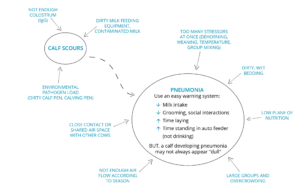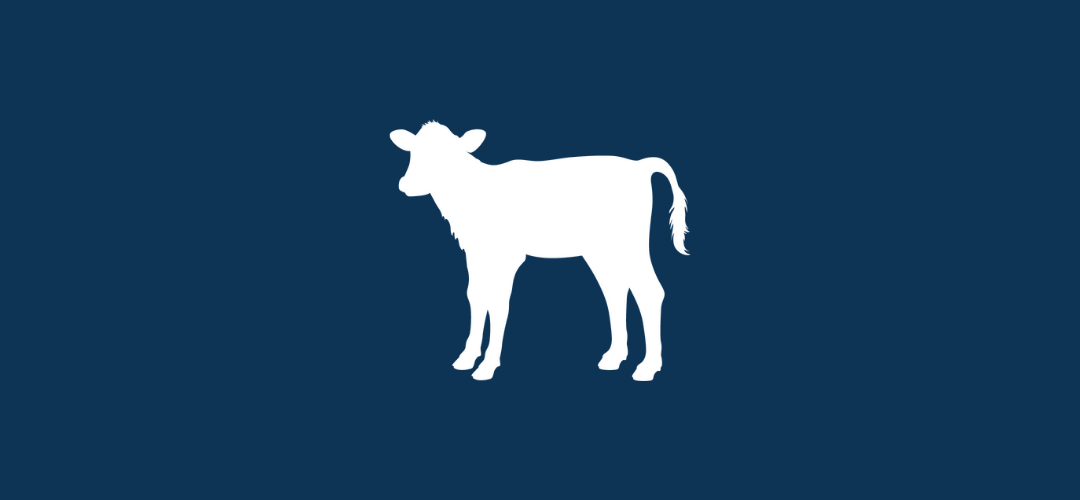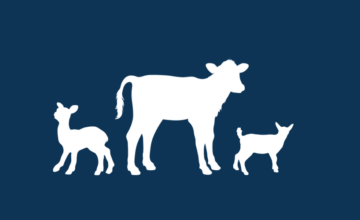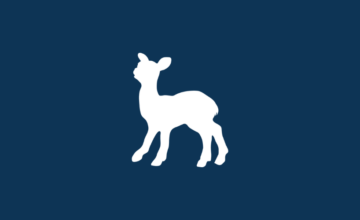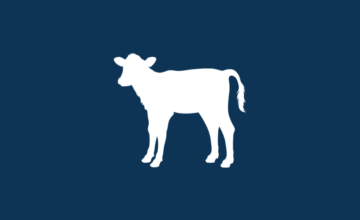Pneumonia in Calves
- Mar 08, 2022
- By Grober Nutrition
- In Canada
Calf Pneumonia: When Stealing Opportunity Away is a Good Thing
Bovine Respiratory Disease (BRD) is a precipitous cascade in calves, with Ontario based studies reporting a range of 17% to 43% of calves experiencing respiratory disease pre-weaning. Economic and animal welfare impacts of BRD is a serious concern, with lasting effects seen in decreased first lactation milk yield. Developing systems to detect early signs of disease is important to steal opportunity away from bacteria and viruses that cause BRD. Relying solely on the appearance of symptoms (nasal and eye discharge, droopy ears, head tilt, cough, lethargy, and/or fever) of BRD, a proportion of calves will miss diagnoses of respiratory disease.
Early indicators of disease
Reduction in milk intake and reduced feeder visits with milk consumed are two automatic milk feeder metrics to look for on a daily basis as an early indicator of illness. However, if feeding by hand, this is harder to see, and if the volume of milk fed is low, hunger may override the feeling of unwell and reduced milk intake not seen. Aside from feed consumption, we can observe for other early behavioural indicators, such as increased time standing in the milk feeder (or milk feeding area), increased and longer bouts of laying down, decreased self-grooming, decreased social interaction with pen mates and/or less interest in a novel object or human. These behavioural observations were reported to appear one to two days prior to the onset of clinical symptoms.
How to minimize disease risk
Pathogens that cause BRD may be present at low amounts in a calf without causing disease, until pressure is applied, weakening the immune system. Viruses and bacteria are champions at seizing opportunity! From the moment the calf is born, opportunities are under our control as to which way the balance tips. Ensuring the calf is born in a clean calving pen, feeding plenty of good quality, clean colostrum, (>22% Brix, or >50g of IgG/L), maintaining clean milk feeding equipment to avoid contamination of milk fed will reduce the chance of developing scours. Calf scours represents an opportunity for bacteria and viruses that cause BRD to take hold due to immune challenge and loss of body reserves. Moreover, clean, dry, deep bedding and removing dirty bedding every two to three days will improve air quality by reducing the levels of ammonia, airborne bacteria and other organisms, which can irritate the respiratory tract, thereby lowering the risk of BRD.
Other environmental factors to control: determine the right ventilation strategy for your calf barn, and adjusting air turnover according to season; if raising calves in groups, maintain group sizes of 8 to 10 calves with 3.3 m2 of bedded lying space, and; isolating calves away from shared airspace with older heifers and cows.
Feeding to strengthen immunity
Lastly, feeding a consistent and high level of nutrition (>6L per day of milk) to calves will support strong growth and enhance immune function. A recent study has shown that a high plane of nutrition pre-weaning had positive lasting effects post-weaning when given a respiratory immune stimulation challenge. By limiting milk intake, the immune system is provided with less energy to mount a defense. Feeding milk with <10% solids has been shown to be associated with an increased risk to develop respiratory disease. Moreover, failure to wean may exacerbate respiratory illness, in addition to coupling stressful events such as dehorning and social group change. As a multifactorial disease, BRD has multifactorial control points to reduce prevalence with precise attention to details and high value placed on calf care.
